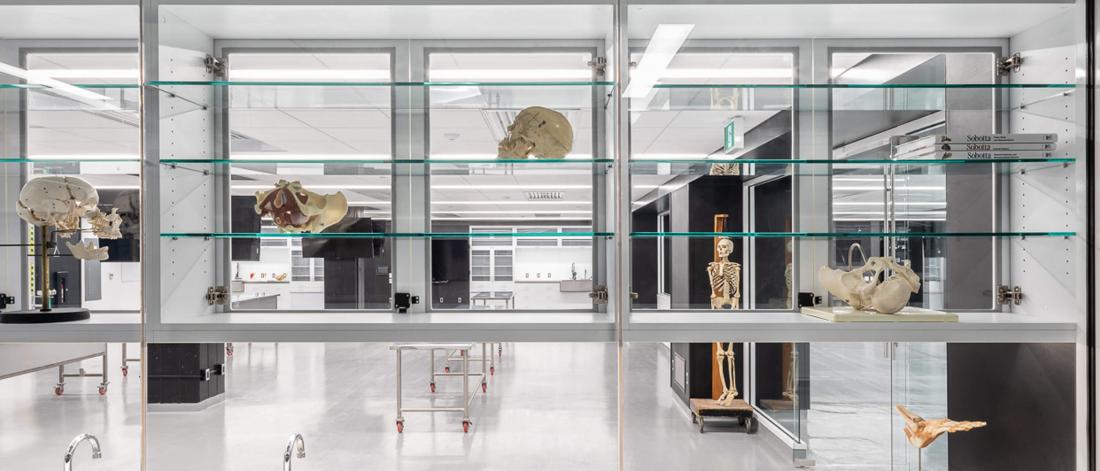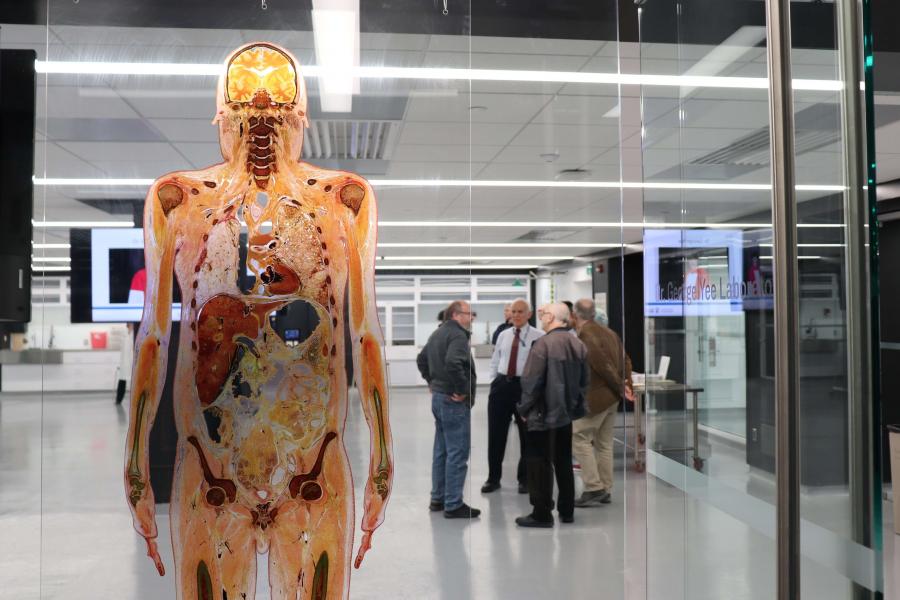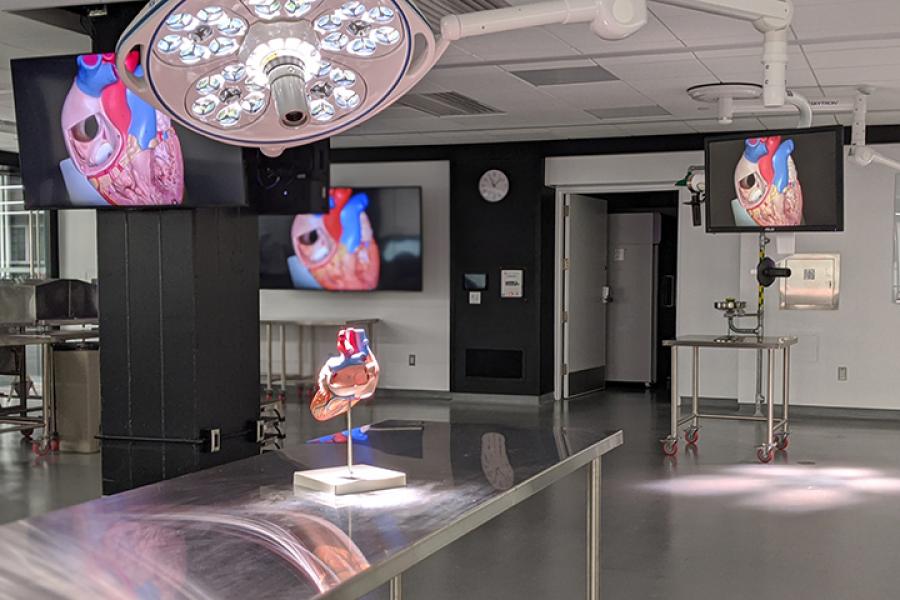
Services
At the Dr. George Yee Laboratory of Anatomical Sciences, we offer a range of services designed to enhance anatomical education.
We specialize in hosting anatomical workshops and collaborate closely with teaching teams to customize lab experiences that leave a lasting impression on students.
Our expert lab coordinator and pro-sector provide guidance in teaching specific topics through methods such as donor viewing, model utilization, and presentations.
In addition, we offer embalming services for more clinically oriented teaching, facilitating hands-on practice of clinical procedures alongside anatomy review.
Facilities
The Dr. George Yee Laboratory of Anatomical Sciences includes high fidelity screens, 3D capabilities and interactive tools. These cutting-edge elements enrich learning experiences, allowing students to explore human anatomy in unprecedented detail and depth.
Reservations and training
Requirements
Access to human material in the anatomy laboratory is a significant privilege; it is important that donated bodies are treated with the greatest professionalism. Before visiting, all participants must read and agree to the Code of Conduct below.
Code of Conduct
As a user of the anatomy laboratory, you must observe and adhere to the following Code of Conduct:
No material is ever to leave the anatomy laboratory.
You must respect the expectations of the donors and honor their wishes in accordance with the goals of body donation.
You must treat the donated bodies and prosections as you would wish your own body, or that of a member of your family, to be treated.
It is prohibited to position or display a body or a part of a body in an inappropriate, comical, or obscene manner.
During and after study sessions, it is important to adequately moisten the body with the wetting solution provided to prevent drying of the specimens.
Donated bodies and prosections have identification numbers. For burial purposes, it is important that these numbers not be removed and that all parts of each body remain on the original dissection table.
Prosections should be returned to their original storage locations in the anatomy laboratory after use.
No photographs from mobile devices or cameras are ever to be taken in the anatomy laboratory.
Unauthorized visitors are not allowed in the anatomy laboratory.
Students are not allowed in the preparation room.
Eating and drinking are not allowed in the anatomy laboratory.
Anatomy laboratory coats or scrubs and gloves must be worn at all times.
Baseball caps, sandals and open-back shoes are not permitted.
Pregnant students or students who breastfeed should consult with their program education dean as well as the respective course director either to determine an alternative to replace the anatomy laboratory credits or to withdraw from the course.
All scratches, abrasions and open skin lesions should be completely covered when in the anatomy laboratory.
Any cuts sustained in the anatomy laboratory should be treated immediately.
All accidents should be reported to the anatomy laboratory Manager and an incident report form should be filled out.
Witnessing a violation of any of the aforementioned points and not reporting the violation to an anatomy laboratory supervisor will be considered complicity with said violation; it is therefore incumbent upon all users to notify personnel of any breaches in conduct.
The Department of Human Anatomy & Cell Science within the Max Rady College of Medicine, Rady Faculty of Health Sciences has the right to enforce any or all standards of the Code of Conduct and can impose sanctions, up to and including removal from a lab/unit/program for a violation of the code, unethical use of human material, or verbal or physical aggression against staff or students.
You may also be looking for
Contact us
Dr. George Yee Laboratory of Anatomical Sciences
Basement, 745 Bannatyne Avenue
University of Manitoba (Bannatyne campus)
Winnipeg, MB R3E 0J9 Canada




